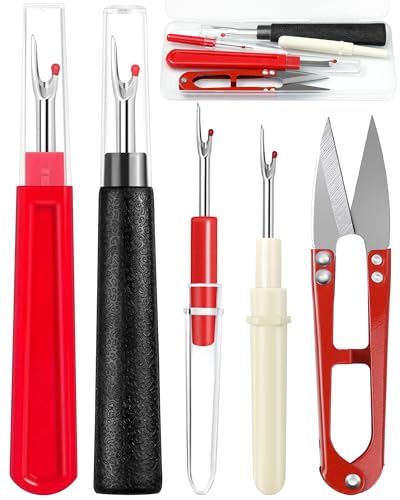Sewing a basic hem by hand isn’t as daunting as it might seem. Whether you’re fixing your favorite jeans or hemming a new dress, mastering this skill can save you time and money.
I remember the first time I took on this task—it felt like a small victory. With just a needle and thread, you can achieve neat and professional-looking results that rival any machine-made hem.
Materials Needed
- Needle: A sharp hand-sewing needle appropriate for your fabric type.
- Thread: Matching thread that complements your garment’s color and fabric weight.
- Scissors: Sharp fabric scissors for precise cutting.
- Pins or Fabric Clips: To hold the hem securely in place while you sew.
- Measuring Tape: For accurate measurements to ensure an even hem.
- Iron and Ironing Board: To press the hem and create crisp, professional-looking edges.
- Marking Tool: Tailor’s chalk or a fabric marker to indicate the hemline.
Preparing the Fabric
Before stitching, getting your fabric ready ensures a neat and lasting hem.
Measuring the Hem
Accurate measurements guarantee a consistent hem. I start by turning the garment inside out and using a measuring tape to determine the desired hem length. For example, I might decide on a 1-inch fold. I mark this measurement evenly around the entire edge with a fabric marker to guide my folding.
Pinning the Hem
Securing the fabric prevents shifting while I sew. I fold the marked edge twice, ironing it flat for a crisp fold. Then, I place small pins along the hemline, spacing them about 4 inches apart. This setup keeps the fabric in place, making it easier to stitch a straight and even hem.
Sewing the Hem
Sewing the hem requires careful technique to achieve a clean and lasting finish. Consistent stitches and proper tension ensure your hem looks professional.
Basic Hand Sewing Techniques
I start by threading my needle securely to prevent knots. Holding the fabric firmly allows for smooth, even stitching. Moving my hand steadily ensures each stitch aligns perfectly with the previous one.
Stitch Types
- Running Stitch: Creates a straight, simple line ideal for lightweight fabrics.
- Backstitch: Provides extra strength, perfect for areas that undergo more stress.
- Slip Stitch: Offers an invisible finish, suitable for delicate or sheer materials.
Finishing Touches
Once the hem is sewn, follow these steps to complete your project:
- Remove Pins
Carefully take out all pins or fabric clips to ensure the hem lies flat.
- Iron the Hem
- Temperature Settings: Use the appropriate heat based on fabric type.
- Pressing Technique: Iron along the folded edge to set stitches and create a sharp line.
- Check for Evenness
- Visual Inspection: Ensure both sides are symmetrical.
- Adjust if Needed: Make minor adjustments by pressing or re-sewing sections.
- Trim Excess Threads
- Snip Close: Cut threads within 1/8 inch of the fabric to avoid fraying.
- Use Sharp Scissors: Ensure clean cuts without damaging the fabric.
- Reinforce the Hem
- Double Stitching: Add another line of stitches for added durability.
- Hidden Stitches: Use slip stitches for a seamless look on delicate fabrics.
- Final Press
Give the entire hem a final press to smooth out any remaining wrinkles and set the finished look.
By following these finishing touches, your hand-hemmed garment will have a professional and polished appearance, ready for wear or display.
Conclusion
Sewing a basic hem by hand is simpler than you might think. It’s empowering to make your own adjustments and keep your favorite clothes looking great. With a little practice you’ll have the skills to handle any hemming task that comes your way. Happy sewing!

















